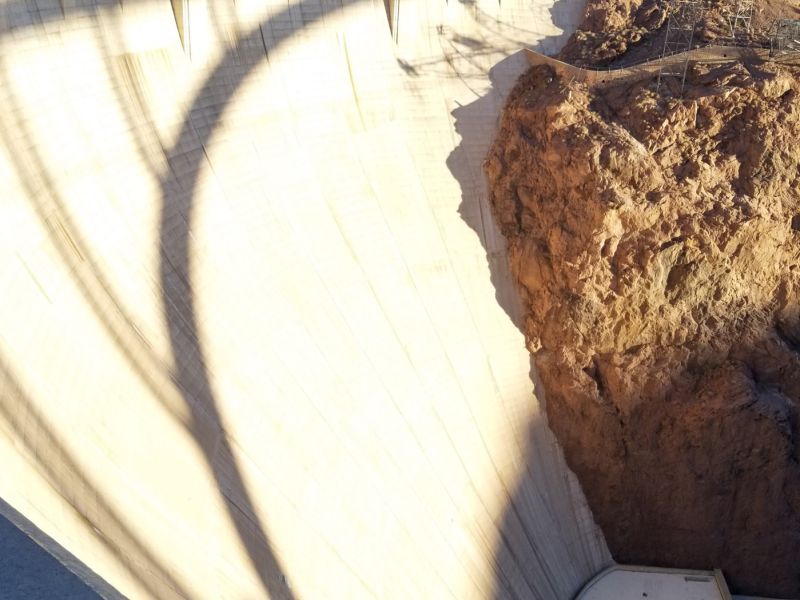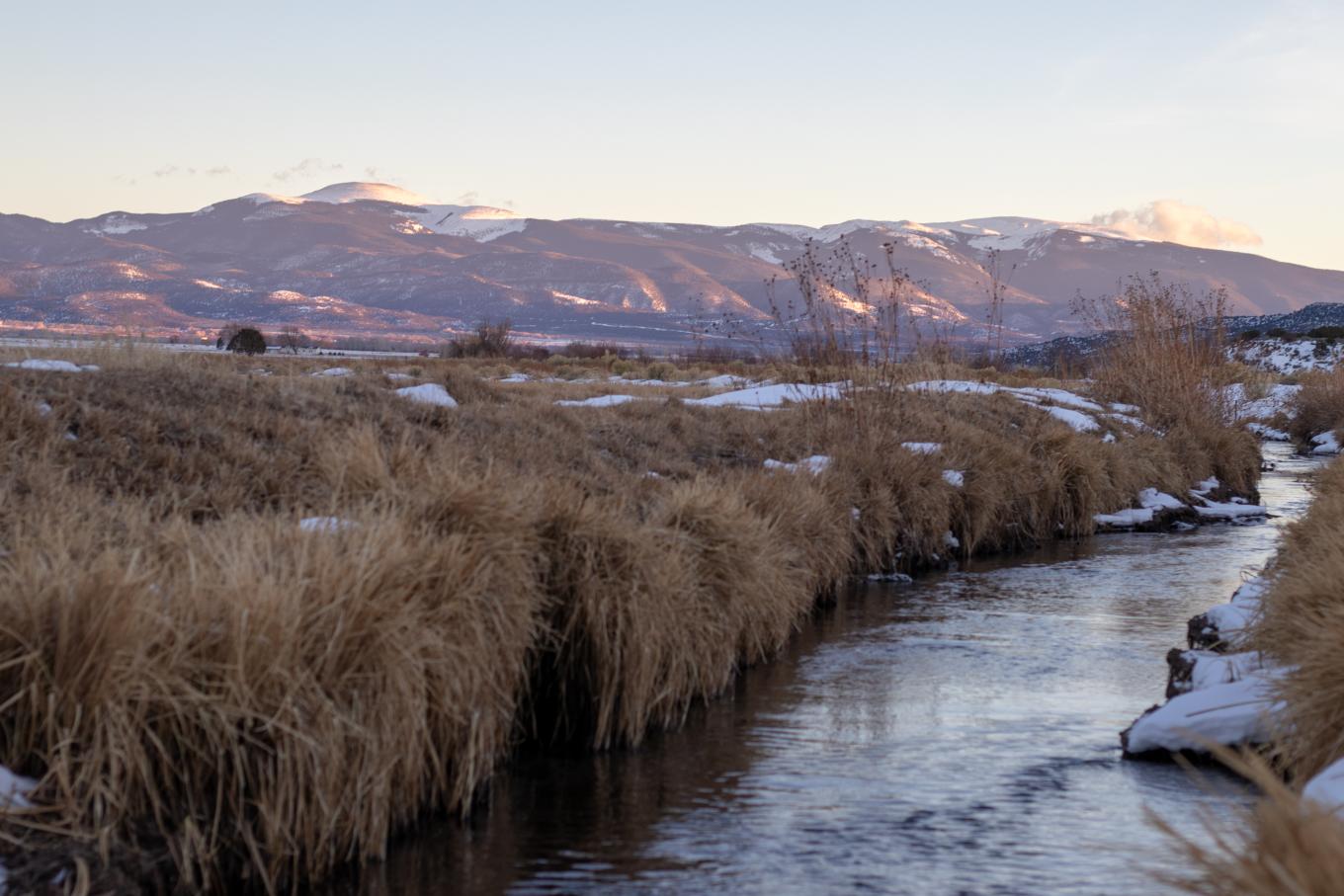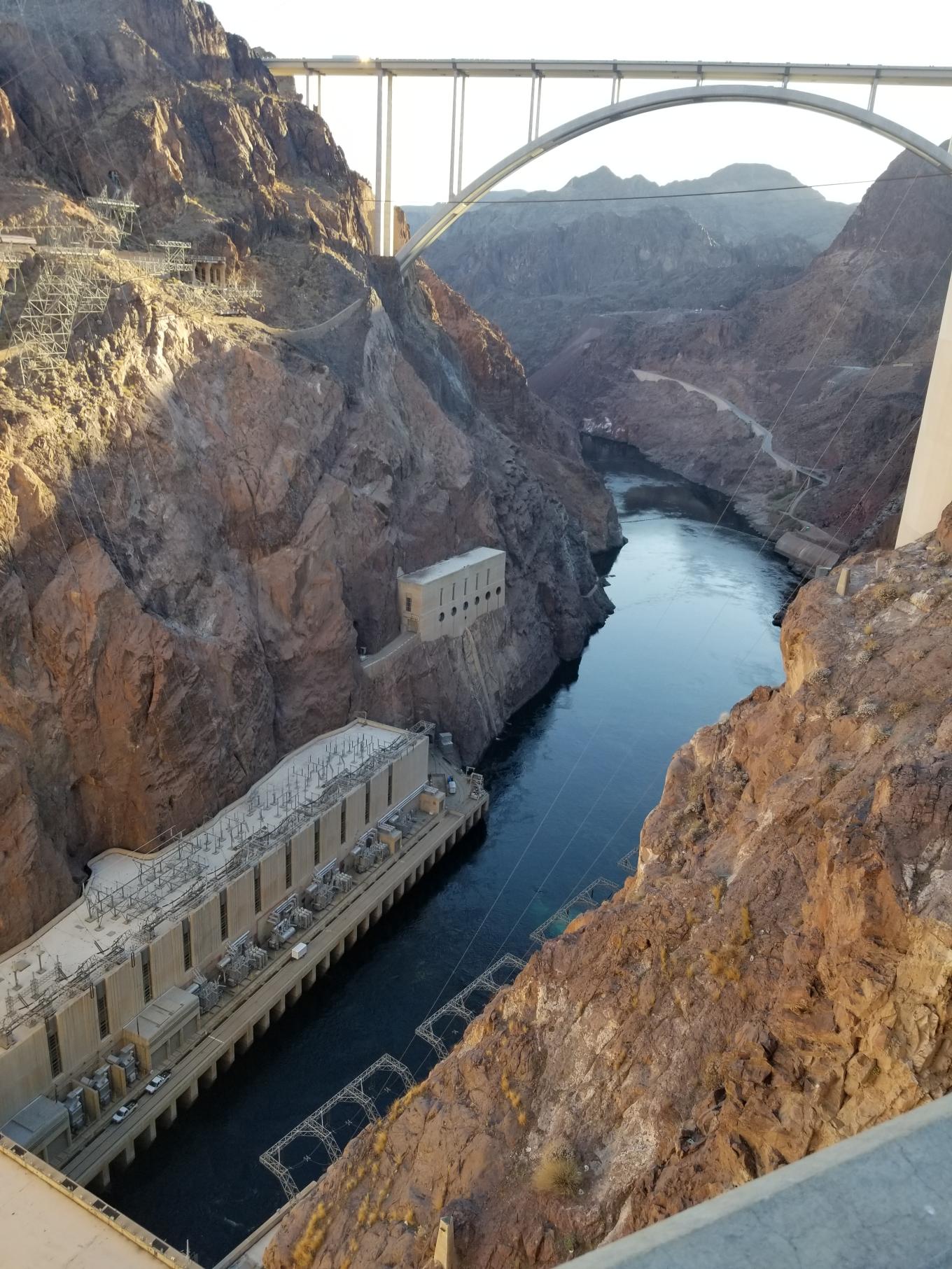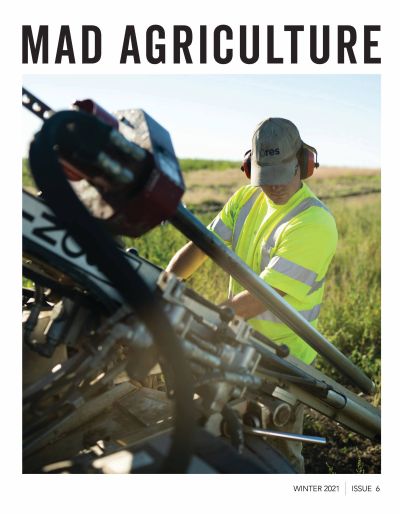
The Mad Agriculture Journal
Water and the Need for a Mad Urbanism
Published on
November 12, 2021
Written by
Gregor MacGregor
Reworking our society and agricultural systems to become more equitable and sustainable can’t just be left to Wendell Berry’s Mad Farmer. From the smallest organic plots to the vastest grain fields, only 1% of the nation’s population engages in production agriculture. What are the other 99% of us to do? In urban areas, the many machinations that make dense living possible are largely hidden away from view and brought to mind only by the iterative inconvenience of construction and the arrival of a water bill. It is only through careful interrogation of these machinations that we can begin to build a better way forward, one that supports urban aspirations and rural communities alike.
We must first understand our natural landscape and how we have shaped it to conform to a culture of landed (and grassy) estates imported from Europe (and subsequently the East Coast), which is far removed from our climactic reality. A view of most metropolitan areas in the West from an airplane or on the street includes a lushness of grass and trees in middle class and wealthy areas (though look-up the green-grey divide to see how we leave our poorer neighborhoods behind). Our unthinking acceptance of this green landscape comes from some odd psychology engendered by the built permanence of our cities, “the city is here, it is green, we must have the climate and water that makes it green.”
However, as we leave the metropole, we need to reflect on what we see outside of it – the remnants of shortgrass prairie, montane shrubland, high desert. Despite these obvious displays of aridity, most residents are still amazed to find the level to which their lush urban environs are artificial and the result of monumental efforts to make them so. Colorado, my home state, is one such place.

The disparities are shocking – 80% of the population of the state lives on the east side of the continental divide, but only 20% of the state’s precipitation falls there. What developed as the population grew and outstripped water supplies along the Front Range was a complex series of engineering marvels which take water from river systems in the western part of the state and quite literally run it under the mountains. Dillon Reservoir, sitting at the foot of Breckenridge, impounds the flow of the Blue River before sending it through the Harold D. Roberts Runnel, a 23.3 mile conduit, beneath the Rocky Mountains and into the South Platte River. This water is destined for the Denver metropolitan area, Nebraska, and beyond. The tunnel required 20 years to construct and runs almost a mile under the surface of the earth near Santa Fe Peak.
Colorado is not alone in the West. The Central Arizona Project pumps 456 billion gallons of water uphill over 300 miles from Lake Havasu to Phoenix and Tucson, requiring 2.5 million megawatt hours. To the west, a similar engineering marvel delivers Colorado River water up to and through the San Jacinto mountains on its way to southern California’s metropolitan coast.
So, the question still remains: what can those of us who live in Western urban communities do? I propose that we must find our own Mad Urbanism to strengthen our communities, conserve water, and conserve the agricultural communities on which we rely.
Las Vegas, peering over the bathtub ring into the physical and metaphorical abyss of Lake Mead, is pioneering what some of this Mad Urbanism could look like. Facing increasing scarcity on the Colorado River, the state of Nevada has outlawed “non-functional turf.” This includes grass along highway exits, street medians, and shopping center parking lots. In short, all of the locations where the only feet likely to trod the lush grass are of those of the landscapers cutting it. Estimates show that this will eliminate roughly 40% of the grass in Las Vegas, an area of almost 8 square miles, saving 32 million gallons of water a day. This is a truly astounding number. Without affecting private lawns, parks, golf courses, or other areas we genuinely care for, Las Vegas is set to reduce its water use by 15%.
Often, we hear refrains criticizing water used “just to feed cows alfalfa.” In cities and towns across the country, we should be asking why we are using our water just to feed lawn mowers. Let us not wait, as Nevada and Las Vegas have, until we are on the precipice of disaster. We need to come forward and educate our local governments and communities on the importance of water and the need for smart water governance. In a study of major population centers across Colorado, only half had permanent watering restrictions. With such simple rules as alternating watering days and limiting landscape irrigation to the times of day that minimize the amount of evaporation, cities can see a 20% reduction in per-capita water use per day — low-hanging fruit for a new water-conscious urbanism.
While Nevada’s mandatory approach may be new, the Denver Water utility pioneered “xeriscape landscaping,” commonly referred to as xeriscaping, in 1981. Xeros is a Greek word meaning “dry,” and serves as the basis for landscaping with fewer water-intensive plants in our built environments. While some landscapers continue importing ornamental species, albeit drought hardy ones, our scientific understanding of the importance of native plants has improved. Ecologist Douglas Tallamy advocates for a rewilding of America by using our landscaping to mimic the ecological services provided by the native plant and animal species of our region. This “Homegrown National Park” is created by planting native plants, many of which support more species of invertebrates (and thus the entire ecosystem) than even the best-performing imported ornamentals by several orders of magnitude. Matching our landscaping to our local climactic and ecological realities is key to conserving water and the vitality of the natural world around us. As Mad Urbanists, let us bring forward and build consensus around ordinances directly affecting our watering habits and landscaping choices.

Direct regulation of water use is only the start. The land-use water nexus is one that will determine the water and financial future of our communities long into the future. Our decisions in zoning and development directly affect how much water our communities use, how much we spend on infrastructure, how much energy we use to pump water through that infrastructure, the volume of greenhouse gases associated with that energy, and how much water is directly consumed in the energy production itself.
Single-family housing can use between 1.2 to 2 times more water per day than multi-family housing. Single-family housing and zoning also yield less tax revenue than denser models but require far more infrastructure to support. Strong Towns, an organization dedicated to smart urbanism, routinely demonstrates that our model of development encourages infrastructure investments we cannot afford to maintain. The result is not only fiscally inefficient (Strong Towns profiles the reality of municipalities on the brink of insolvency) but creates a cascade of water inefficiency beyond the mean use for watering lawns.
In 2015, the United States Geological Survey calculated that 1 kilowatt-hour of electricity produced by a thermoelectric power plant (coal, natural gas, nuclear) used an average of 15 gallons of water. That number could be twice as high, however, depending on your local generators’ fuel type and fuel quality, efficiency, and the type of cooling system it uses. This means that on average, running your washing machine uses nearly 110 gallons of water in power production alone. Extrapolating all uses of electricity, from your cellphone to the transmission losses in the powerlines between the generating station and your home, thermoelectric power withdrew 133 billion gallons of water a day across the country in 2015. Improving efficiency in everything from our lightbulbs to the insulation in our walls and our power generation methods can save us money and save us water. Reducing water use also directly reduces electricity demand, requiring less water to produce that electricity in a virtuous cycle of conservation. Improving efficiency in our zoning reduces initial infrastructure and maintenance costs and contributes to the cycle of conservation.
The age of large-scale water transfers across vast landscapes is over. Concerted political resistance to transfers from the water-rich Great Lakes and Snake River basin prevented water imports in the past, but we are approaching a reality in which there is no water to be moved. In what we think of as the water-rich Southeast, Florida has brought Georgia before the Supreme Court, alleging that the upriver state has taken too much water from the Flint and Chattahoochee Rivers, a sobering contention for the rest of the country. We need to plan for a future in which our current allocations and infrastructure represent the zero-sum availability of water. If we want to expand population centers, build new industry, or increase irrigated acreage, we will need to move water from its present uses.
It is this reality which will force us to reckon with the urban-rural water nexus. Without improved water and energy efficiency, improved planning, and smarter use of what we have, the only answer to growing urban populations will be the transfer of agricultural water to urban uses. For nearly one hundred years this was a process in which the urban frontier overtook agricultural land, taking the water that used to irrigate the fields to supply the homes now in those fields. Eventually, however, this was not enough. In Colorado, water marketers and the burgeoning Front Range cities looked south to farms in Crowley County on the Arkansas River, and after a series of purchases transferred the water north. What resulted was nothing less than economic collapse. Not only did the direct revenue from farming leave with the water, but also all of the secondary industries dried up as well – no one was purchasing repair parts, seed, fertilizer, or fuel. The soil of fallowed land turned into dust and blew across the landscape; weeds grew so large that when they tumbled, piling onto fences, snowplows were called in to dislodge them and clear the roads. 55,000 arable acres became 3,500. The combined population of free and imprisoned residents, which are nearly equal, now comprise the poorest county per-capita in the country.

In many ways, Crowley County is the worst-case demonstration of what happens when growing urban areas import water from far-away agricultural communities. Mad Urbanism cannot solely be concerned with what happens inside of the urban corridors. It must ensure that political, economic, and social equity are at the forefront of the decisions that will affect the rural communities around it. Conserving our present water resources so that the growth of one community need not dry up another is the first step. Improved efficiencies will allow our current urban areas to carry more residents using the same amount of water. If growth outstrips these improved efficiencies, then we need to press our utilities and municipalities to source more water ethically. The buy and dry of the past must give way to more flexible arrangements whereby our communities can coexist with one another.
So-called ‘alternative transfer methods’ (ATMs) have grown in acceptance over the last five years. These arrangements between urban and rural areas come in many forms, but several involve an ability for utilities to pay farmers to fallow their fields for a defined period of time, use the water that would have irrigated crops, and then rotate that water back to the farm. The time-limited nature of the transfer ensures that the land is put back into productive use, the city receives the water it needs, and the irrigator receives the economic benefit.
A major shift toward ATMs does not come without its own risks and peculiar management requirements. Typically, our utilities want to know that they have the amount of water required on-hand. This means owning water rights that yield a consistent amount of water that can be stored, banked, and used as needed. As ATMs make up a larger portion of a utility’s portfolio, the amount of uncertainty increases, as does the risk of shortage. ATMs rely on a complex accounting of water at many different points on a stream and complex physical movement of water across the landscape. Any one of those points could result in the wrong amount of water arriving at the wrong time. All this complexity also requires a greater amount of management as engineers forecast flows, technicians move water, and attorneys manage the various contracts. Increased management will increase costs, even as certainty declines. In short, as water customers we will require a certain fortitude to weather uncertainty and increased prices in order to achieve a rural-urban water symbiosis. However, the better we do in our efforts to conserve, the less uncertainty and cost we will have to face.
Mad Urbanism cannot emerge from a single article, or a single locality. How I improve the resiliency of my community may look drastically different than your strategy. What we have in common is another of Wendell Berry’s concepts: the need to solve for pattern. Our solution must improve balances, symmetries, and harmonies. It must solve more than one problem, and it should not enrich one person or community by the distress or impoverishment of another. We must become Mad Citizens, questioning and investigating the physical and legal infrastructures that makes modern urban life possible. Acting and advocating for the betterment of both, we can find a way to improve our urban communities and the rural ones on which we rely.
